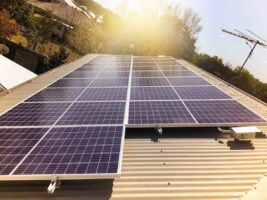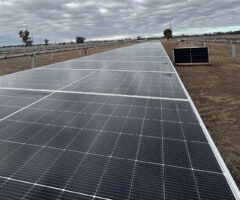The Australian Energy Market Commission has approved new rules requiring all generators within the National Electricity Market to deliver frequency control services, despite concerns that the new mandatory rules may disproportionately burden wind and solar generators.
The AEMC’s acting chief executive Suzanne Falvi said the introduction of the new mandatory “primary” frequency response requirements were timely given the increased focus on system security necessary due to the economic disruption caused by Covid-19.
“[The AEMC] is aware of the additional pressures being placed on the energy sector as the nation responds to the fast moving COVID-19 threat,” Falvi said.
“It is important in these times that Australia’s energy systems and markets are currently operating in a safe and secure state.”
The new rules have been made at the request of RMIT power systems academic Dr Peter Sokolowski and AEMO, who submitted separate rule change proposals to the AEMC in an effort to address a trend towards greater variability in system frequency.
A review completed by the AEMC in 2018 also found that frequency performance within the NEM had significantly worsened over the last decade, and justified the new mandatory requirements.
“Primary frequency control is a critical security issue. Given the challenges posed by COVID-19, AEMO will work with industry on an appropriate timeline for implementation of these new obligations,” AEMO CEO Audrey Zibelman added.
The AEMC has confirmed its view that the new rules should be mandatory for all generators participating in the NEM, dismissing calls from the sector that the arrangements should be voluntary, at least initially.
The new rules now place a requirement on all generators participating in the National Electricity Market despite concerns being raised that some generators are much better placed than others to provide such services.
In making compliance with the new rules mandatory, the AEMC has overruled requests from a substantial portion of the electricity sector, represented by the Australian Energy Council, that requested that the rules, at least initially, were voluntary.
The voluntary proposal also had the backing of the Australian Energy Regulator, but the AEMC followed advice from AEMO that to be effective, the rules should be mandatory.
While all energy market participants, including wind and solar operators, as well as thermal power station operators, are generally in agreement that action must be taken to address deteriorating frequency performance within the energy market, concerns have been raised about the impacts the new rules will have on different technologies.
For many renewable energy technologies, the only available response to frequency fluctuations would be to reduce output, cutting revenues.
In a submission in response to the new rules, the Clean Energy Council estimated that it may reduce the output of wind and solar generators by as much as 0.75 per cent across a year, a not-insignificant impact on output and therefore power station earnings.
On top of that, the cost of upgrading equipment and control systems could run into up to $1 million for a generator to adapt to the new rules.
“The CEC is concerned that the AEMC is not considering the significant opportunity costs that will face renewable generators and batteries as a result of this rule change,” the Clean Energy Council said.
“While it is important that exemptions are available for high upfront upgrade costs, this does not factor in the ongoing operational costs that generators will face when they reduce output in response to over frequency.”
Maintaining the frequency within the electricity system, nominally set at 50 hertz, is key to system stability. Frequency fluctuations can occur as a result in shifts in the supply-demand balance within the electricity market, and if left unchecked can lead to a loss of supply.
Generally, frequency fluctuations are managed by small adjustments being made to the output of select power stations, to ensure the supply-demand balance remains matched.
Battery storage systems, which can quickly adjust their output, have proven particularly adept at frequency control services, but other generators, particularly those which have less control over their immediate output levels, are not as well placed.
The AEMC has included the ability for some generators to seek an exemption from the new rules in cases where generation technology is unable to provide an automatic frequency response or if the cost of implementing such controls is overly burdensome.
These exemptions are like to extend to some wind farms, using older wind turbine technologies and some specialised gas generators. Each exemption will be assessed on a case by case basis.
Under the new rules, AEMO will develop and publish a set of primary frequency response requirements” that will involve a requirement for all generators sending electricity into the NEM to adjust their output in response to frequency fluctuations in an attempt to try and maintain stable frequencies.
A sunset clause on the new rules was added after concerns were raised by the Clean Energy Council and representatives of other generators, particularly given the impost the rule would have on some wind and solar generators that were not best placed to deliver frequency control services.
The AEMC is currently considering an additional rule change that would address some of the financial disincentives of complying with the new mandatory frequency control response requirements, including the fair allocation of costs and clarifying the competing priorities between meeting dispatch instructions and frequency response.
The new requirements will be in place for a period of three years and will be reviewed before a decision is made about their permanent implementation.
RenewEconomy and its sister sites One Step Off The Grid and The Driven will continue to publish throughout the Covid-19 crisis, posting good news about technology and project development, and holding government, regulators and business to account. But as the conference market evaporates, and some advertisers pull in their budgets, readers can help by making a voluntary donation here to help ensure we can continue to offer the service free of charge and to as wide an audience as possible. Thankyou for your support.








